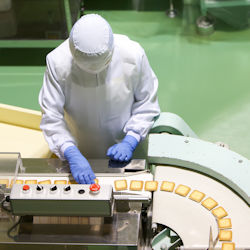Exemptions to the HCS
The HCS exempts the following items in specific situations and cases. The items do need a safety data sheet (SDS). Pay attention to the specific circumstances under which the listed items are exempt.
The HCS does not apply to:
- Regulated hazardous waste when the hazardous substance is the focus of remedial or removal action.
- Tobacco or tobacco products
- Wood or wood products, including lumber which will not be processed, where the chemical manufacturer or importer can establish that the only hazard they pose to employees is the potential for flammability or combustibility (wood or wood products which have been treated with a hazardous chemical covered by this standard, and wood which may be subsequently sawed or cut, generating dust, are not exempted).
- Articles - Manufactured items other than fluids or particles.
- Which are formed to a specific shape or design during manufacture.
- Which have end use function(s) dependent in whole or in part upon its shape or design during end use.
- Which under normal conditions of use do not release more than minute or trace amounts of a hazardous chemical and do not pose a physical hazard or health risk to employees.
- Food or alcoholic beverages which are sold, used, or prepared in a retail establishment, and foods intended for personal consumption by employees while in the workplace.
- Cosmetics which are packaged for sale to consumers in a retail establishment, and cosmetics intended for personal consumption by employees while in the workplace.
- Consumer products or hazardous substances where the employer can show that:
- they are used in the workplace for the purpose intended by the chemical manufacturer or importer of the product, and
- the use results in a duration and frequency of exposure which is not greater than the range of exposures that could reasonably be experienced by consumers when used for the purpose intended.
- Nuisance particulates where the chemical manufacturer or importer can establish that they do not pose any physical or health hazard.
- Ionizing and non-ionizing radiation
- Biological hazards if the only hazard posed is biological.
Knowledge Check Choose the best answer for the question.
1-8. Which product used in the workplace would always be allowed by the HCS?
You forgot to answer the question!

